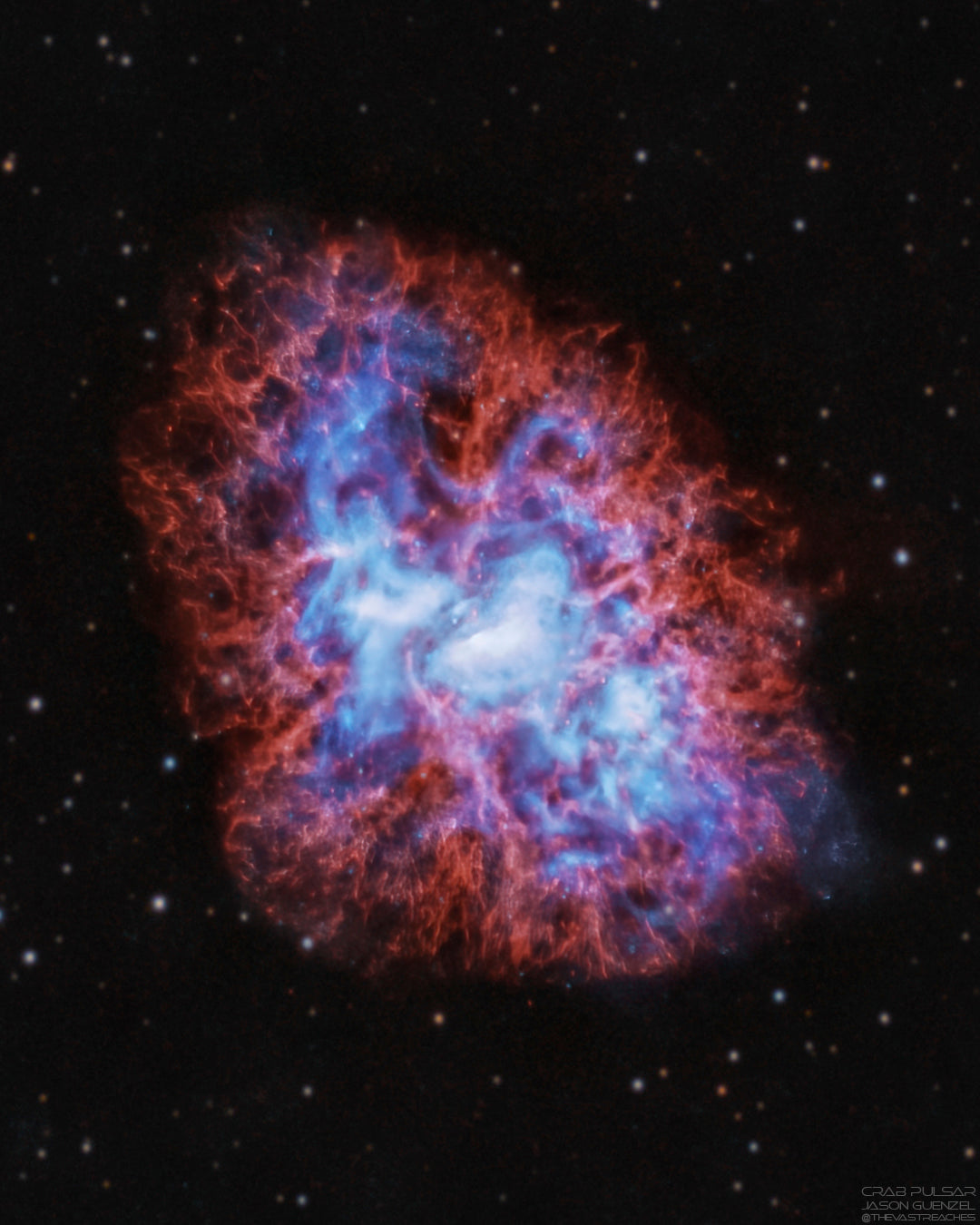I certainly never thought that one day I'd be taking pictures of a pulsar in deep space from my backyard. Yet, here we are.
The first object in Charles Messier's catalog, Messier 1, is rather notable. Almost a millennium ago, in the year 1054, Chinese astronomers noted a new "star" in the sky that was bright enough to be seen during the daytime. Of course, little was known of this at the time and for around 700 years it was only a footnote in history. In the 1700s, it was rediscovered by at least a couple astronomers. Messier added it to his list of comet-like objects. It later earned the nickname, the Crab Nebula, due to some of the the first sketches resembling the form of a crab.
It wasn't until subsequent photographic assessments in the twentieth century that astronomers realized the true nature of this nebula. It was visibly expanding in each observation! Tracing the growth in reverse tells a compelling story that this expansion began 1000 years ago, placing it squarely in line with the initial Chinese observation.
The Crab Nebula is a supernova remnant. The progenitor star exploded, sending shells of gas outward as the inner core, no longer able to support itself with fusion, compressed into a rapidly spinning pulsar. This is one of the more extreme objects in the universe and it is literally sitting there in our cosmic backyard about 6,500 light years away from our solar system.
Within the core of the nebula, the dominant force is the outward radiation from the pulsar. This is known as a "pulsar wind nebula". Our proximity to the Crab Nebula allows for some detailed observation, but it is tricky due to the supernova remnants that encase the core like a shell.
I wanted a deeper look. So, here's my attempt.




1 comment
Outstanding work.